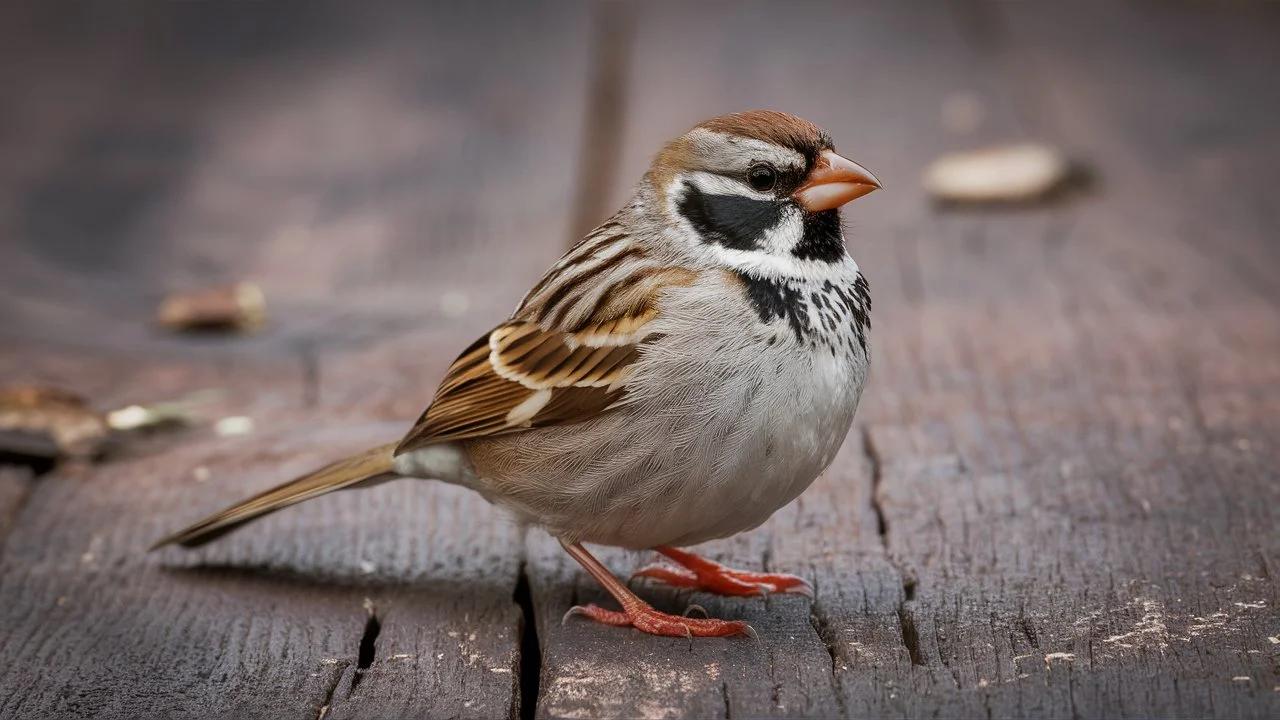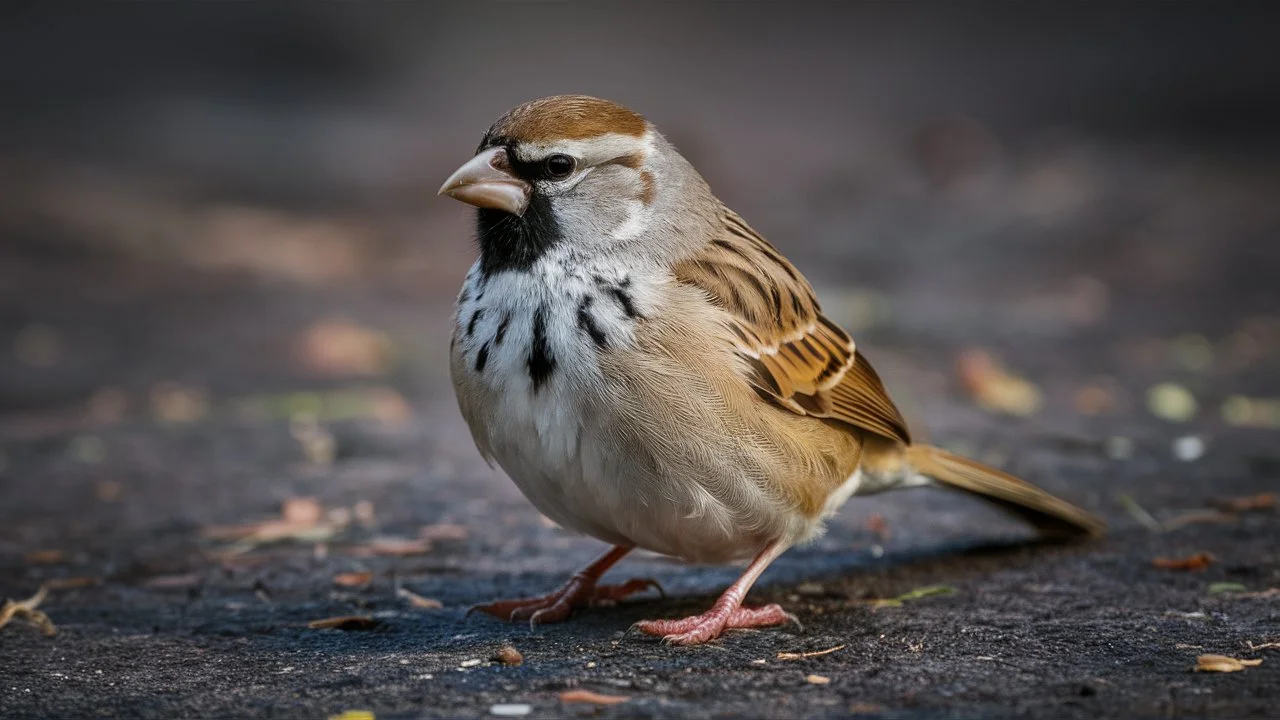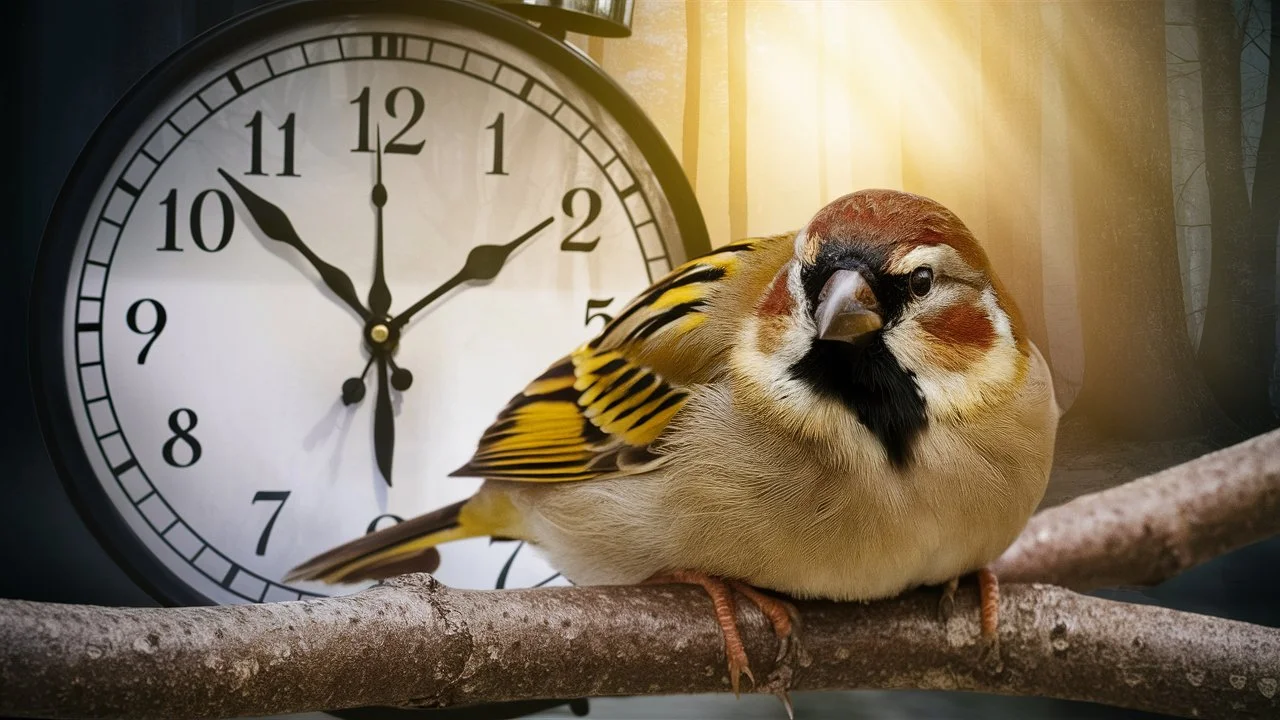Sparrows typically live 3-5 years in the wild, though some may reach up to 10 years under favorable conditions. In captivity, sparrows can live significantly longer, often reaching 12-14 years due to controlled environments, regular food supply, and absence of predators. Factors such as predation, disease, food availability, and climate conditions play a crucial role in determining their lifespan in the wild.
How Long Do Sparrows Live?
Sparrows are among the most familiar birds in the world, known for their adaptability and close association with human habitats. Understanding their lifespan involves looking at various species, environmental factors, and other influences that affect their longevity. This comprehensive guide will delve into the lifespan of sparrows, the factors that impact it, and how these small birds manage to survive in diverse environments.
Overview of Sparrow Species
Sparrows belong to the family Passeridae, and there are numerous species worldwide. Two of the most well-known species are the House Sparrow (Passer domesticus) and the Tree Sparrow (Passer montanus). While their lifespans can vary, they share some common traits that influence their survival and longevity.
Realted reading:Can Birds Eat Popcorn?

Average Lifespan in the Wild
House Sparrow (Passer domesticus):
- Lifespan: Typically, House Sparrows live 3-5 years in the wild. However, some individuals can reach up to 10 years.
- Factors: The lifespan can be affected by predation, disease, food availability, and climate conditions.
Tree Sparrow (Passer montanus):
- Lifespan: Tree Sparrows generally live around 3-5 years in the wild, with some reaching up to 7 years.
- Factors: Similar to House Sparrows, their lifespan is influenced by environmental conditions, predation, and food resources.
Factors Influencing Lifespan
Several factors contribute to the lifespan of sparrows, influencing how long they can survive in their natural habitats.
- Predation:
- Natural Predators: Sparrows face threats from various predators, including cats, hawks, owls, and snakes. Predation is a significant factor that reduces their lifespan.
- Urban Predators: In urban areas, sparrows may face additional threats from domestic pets and human-related dangers.
- Food Availability:
- Natural Food Sources: Sparrows primarily feed on seeds, insects, and small invertebrates. Availability of these food sources can impact their health and longevity.
- Human-Provided Food: In urban areas, sparrows often rely on food provided by humans, such as crumbs and bird feeders, which can support their survival during harsh conditions.
- Climate and Weather:
- Extreme Weather: Harsh winters, severe storms, and prolonged droughts can increase mortality rates among sparrows. Extreme weather conditions can lead to food shortages and exposure to lethal temperatures.
- Seasonal Variations: Seasonal changes affect food availability and shelter, influencing survival rates.
- Disease:
- Common Diseases: Sparrows are susceptible to various diseases, including avian pox, salmonellosis, and trichomoniasis. Disease outbreaks can significantly impact their populations.
- Parasites: External parasites like mites and lice, as well as internal parasites like worms, can affect the health and lifespan of sparrows.
- Human Interaction:
- Urban Environments: Sparrows often thrive in urban areas due to abundant food and shelter. However, they also face risks from traffic, window collisions, and pollution.
- Conservation Efforts: In some regions, conservation efforts aimed at preserving natural habitats and providing bird-friendly environments can positively influence sparrow populations.
Lifespan in Captivity
In captivity, sparrows can live significantly longer than in the wild due to controlled environments, regular food supply, and absence of predators and harsh weather conditions.
- House Sparrows: In captivity, House Sparrows can live up to 12-14 years, provided they receive proper care and a balanced diet.
- Tree Sparrows: Similar to House Sparrows, Tree Sparrows can also enjoy an extended lifespan in captivity, often reaching 10-12 years or more.
Sparrow Behavior and Survival Strategies
Sparrows have developed various behaviors and survival strategies to cope with their environments and increase their chances of survival.
- Flocking Behavior:
- Safety in Numbers: Sparrows often form flocks, which can help reduce the risk of predation. Flocking provides safety in numbers, making it more difficult for predators to target individual birds.
- Foraging Efficiency: Flocking also enhances foraging efficiency as birds can share information about food sources and reduce the time spent searching for food.
- Nesting Habits:
- Nest Location: Sparrows build their nests in sheltered locations, such as under eaves, in tree cavities, or in dense vegetation. Choosing safe nesting sites helps protect their young from predators and harsh weather.
- Multiple Broods: Sparrows are prolific breeders, often raising multiple broods in a single breeding season. This reproductive strategy increases the likelihood of offspring survival.
- Adaptability:
- Urban Adaptation: Sparrows are highly adaptable and can thrive in urban environments. They take advantage of human-provided resources, such as food scraps and nesting sites in buildings.
- Resourcefulness: Sparrows are opportunistic feeders and can adjust their diet based on available food sources, which helps them survive in diverse environments.
Conservation and Protection of Sparrows
Despite their adaptability, sparrows face challenges that threaten their populations. Conservation efforts aimed at protecting sparrows and their habitats are crucial for ensuring their survival.
- Habitat Preservation:
- Natural Habitats: Protecting natural habitats, such as woodlands, grasslands, and wetlands, is essential for maintaining healthy sparrow populations.
- Urban Habitats: Creating bird-friendly urban environments with green spaces, native plants, and birdhouses can support sparrow populations in cities.
- Food and Water Supply:
- Bird Feeders: Providing bird feeders with seeds and fresh water can help support sparrows, especially during harsh weather conditions.
- Natural Food Sources: Encouraging the growth of native plants that produce seeds and attract insects can provide natural food sources for sparrows.
- Public Awareness:
- Education: Raising public awareness about the importance of sparrows and the threats they face can encourage conservation efforts.
- Community Involvement: Engaging communities in bird conservation projects, such as building birdhouses and participating in bird counts, can contribute to sparrow protection.
How Long Do Sparrows Live in the Wild vs. Captivity?
Sparrows, small and adaptable birds, are found across the globe and are well-known for their close association with human habitats. The lifespan of sparrows can vary significantly depending on whether they live in the wild or in captivity. This guide explores the differences in lifespan between wild and captive sparrows, factors influencing their longevity, and what contributes to their survival in different environments.

Lifespan of Sparrows in the Wild
House Sparrow (Passer domesticus):
- Average Lifespan: Typically, House Sparrows live 3-5 years in the wild. However, some individuals can reach up to 10 years under favorable conditions.
- Factors Influencing Lifespan: Predation, disease, food availability, and climate conditions are primary factors affecting their lifespan.
Tree Sparrow (Passer montanus):
- Average Lifespan: Tree Sparrows generally live around 3-5 years in the wild, with some living up to 7 years.
- Factors Influencing Lifespan: Similar to House Sparrows, Tree Sparrows are affected by environmental conditions, predation, and food resources.
Factors Influencing Lifespan in the Wild
- Predation:
- Sparrows face threats from various predators such as cats, hawks, owls, and snakes.
- In urban areas, they may also encounter risks from domestic pets and human-related dangers.
- Food Availability:
- Sparrows feed on seeds, insects, and small invertebrates. Availability of these food sources impacts their health and longevity.
- Urban areas may provide additional food sources, such as food scraps and bird feeders, which can help support sparrow populations.
- Climate and Weather:
- Extreme weather conditions, such as harsh winters, severe storms, and prolonged droughts, can increase mortality rates.
- Seasonal changes affect food availability and shelter, influencing survival rates.
- Disease:
- Sparrows are susceptible to various diseases, including avian pox, salmonellosis, and trichomoniasis.
- Parasites like mites, lice, and internal parasites such as worms can also affect their health and lifespan.
- Human Interaction:
- Urban environments may offer protection from some predators but introduce new hazards like collisions with windows or cars.
- Conservation efforts and providing bird-friendly environments can positively influence sparrow populations.
Lifespan of Sparrows in Captivity
In captivity, sparrows can live significantly longer than in the wild due to controlled environments, regular food supply, and absence of predators and harsh weather conditions.
House Sparrows:
- Average Lifespan: In captivity, House Sparrows can live up to 12-14 years with proper care and a balanced diet.
Tree Sparrows:
- Average Lifespan: Tree Sparrows can also enjoy an extended lifespan in captivity, often reaching 10-12 years or more.
Factors Contributing to Longer Lifespan in Captivity
- Controlled Environment:
- Sparrows in captivity are protected from predators and extreme weather conditions, reducing the risk of injury and mortality.
- Regular cleaning and maintenance of their habitat prevent disease and parasite infestations.
- Regular Food Supply:
- Captive sparrows receive a consistent and balanced diet, ensuring they get the necessary nutrients for optimal health.
- Fresh water is always available, preventing dehydration and supporting overall well-being.
- Veterinary Care:
- Access to veterinary care allows for early detection and treatment of diseases and injuries, increasing their chances of survival.
- Preventative measures, such as vaccinations and parasite control, further enhance their health.
- Stress Reduction:
- A stable and safe environment reduces stress, which can positively impact their lifespan.
- Enrichment activities, such as providing perches, toys, and foraging opportunities, keep them mentally stimulated and physically active.
Survival Strategies of Sparrows
Sparrows have developed various behaviors and strategies to cope with their environments and increase their chances of survival.
- Flocking Behavior:
- Flocking provides safety in numbers, making it more difficult for predators to target individual birds.
- It also enhances foraging efficiency as birds can share information about food sources.
- Nesting Habits:
- Sparrows build their nests in sheltered locations, such as under eaves, in tree cavities, or in dense vegetation, to protect their young from predators and harsh weather.
- They are prolific breeders, often raising multiple broods in a single breeding season, increasing the likelihood of offspring survival.
- Adaptability:
- Sparrows are highly adaptable and can thrive in urban environments by taking advantage of human-provided resources.
- They are opportunistic feeders, adjusting their diet based on available food sources, which helps them survive in diverse environments.
Conservation and Protection of Sparrows
Despite their adaptability, sparrows face challenges that threaten their populations. Conservation efforts aimed at protecting sparrows and their habitats are crucial for ensuring their survival.
- Habitat Preservation:
- Protecting natural habitats, such as woodlands, grasslands, and wetlands, is essential for maintaining healthy sparrow populations.
- Creating bird-friendly urban environments with green spaces, native plants, and birdhouses can support sparrow populations in cities.
- Food and Water Supply:
- Providing bird feeders with seeds and fresh water can help support sparrows, especially during harsh weather conditions.
- Encouraging the growth of native plants that produce seeds and attract insects can provide natural food sources for sparrows.
- Public Awareness:
- Raising public awareness about the importance of sparrows and the threats they face can encourage conservation efforts.
- Engaging communities in bird conservation projects, such as building birdhouses and participating in bird counts, can contribute to sparrow protection.
Sparrow Habitat and Survival Strategies
Sparrows are among the most ubiquitous birds, known for their adaptability and resilience in various environments. Their ability to thrive in diverse habitats is a testament to their evolutionary success. This guide delves into the habitats of sparrows, their survival strategies, and how these elements contribute to their widespread presence.
Habitat of Sparrows
Sparrows are found on almost every continent, from bustling urban centers to remote rural areas. Understanding their habitat preferences helps explain their survival and adaptability.
Urban Habitats
- Cities and Towns: Sparrows, especially House Sparrows, are commonly found in urban areas. They thrive in cities and towns where food and shelter are abundant.
- Nesting Sites: In urban environments, sparrows often nest in buildings, under eaves, in roof crevices, and in man-made structures. These sites offer protection from predators and harsh weather.
- Food Sources: Urban areas provide a variety of food sources, including discarded food, bird feeders, and gardens. Sparrows are opportunistic feeders, capitalizing on human activities to supplement their diet.
Rural Habitats
- Farms and Fields: Rural areas with open fields, farmlands, and grasslands are ideal habitats for sparrows. They feed on seeds from crops and weeds, and insects found in these areas.
- Nesting Sites: In rural habitats, sparrows nest in hedges, bushes, trees, and buildings like barns and sheds. These sites provide ample cover and safety for raising their young.
- Seasonal Changes: Sparrows in rural areas adapt to seasonal changes by shifting their diet from insects in the summer to seeds in the winter. They also seek shelter in dense vegetation during colder months.
Natural Habitats
- Woodlands and Forest Edges: Some sparrow species prefer natural habitats like woodlands and forest edges. These areas offer diverse food sources and nesting sites.
- Shrublands and Grasslands: Sparrows thrive in shrublands and grasslands where they can find seeds, insects, and safe nesting sites. These habitats provide the necessary cover and resources for survival.
Survival Strategies of Sparrows
Sparrows have developed a range of survival strategies to cope with different environmental challenges. These strategies enhance their ability to find food, protect themselves from predators, and reproduce successfully.
Flocking Behavior
- Safety in Numbers: Sparrows often form flocks, which provide safety in numbers. Flocking makes it more difficult for predators to target individual birds.
- Foraging Efficiency: Flocking behavior also enhances foraging efficiency. Birds can share information about food sources, reducing the time and effort spent searching for food.
- Thermoregulation: In colder climates, flocking helps sparrows conserve heat by huddling together, reducing heat loss.
Nesting Habits
- Nest Location: Sparrows are versatile nesters, choosing a variety of locations based on the environment. Urban sparrows often nest in buildings, while rural sparrows may choose trees, bushes, or man-made structures.
- Multiple Broods: Sparrows are prolific breeders, often raising multiple broods in a single breeding season. This reproductive strategy increases the likelihood of offspring survival.
- Nest Construction: Sparrows build their nests using available materials such as grass, twigs, feathers, and paper. This adaptability in nest construction helps them thrive in diverse environments.
Adaptability
- Diet Flexibility: Sparrows are opportunistic feeders with a flexible diet that includes seeds, insects, fruits, and human-provided foods. This adaptability allows them to survive in various habitats.
- Urban Adaptation: In urban environments, sparrows take advantage of human activities to find food and shelter. They are often seen scavenging for crumbs, nesting in buildings, and visiting bird feeders.
- Resourcefulness: Sparrows can quickly adapt to changes in their environment, such as new food sources or nesting sites. This resourcefulness helps them thrive in dynamic and unpredictable habitats.
Defense Mechanisms
- Vigilance: Sparrows are highly vigilant and often rely on alarm calls to warn other members of the flock about potential dangers. This collective vigilance helps them avoid predators.
- Camouflage: Their brown and grey plumage provides effective camouflage against the ground and foliage, helping them avoid detection by predators.
- Aggressive Behavior: Sparrows can be aggressive in defending their territory and nests from intruders, including other birds and potential predators.
Seasonal Adaptations
- Migration: Some sparrow species undertake short-distance migrations to find more favorable conditions during different seasons. This behavior helps them avoid extreme weather and find food more easily.
- Diet Shifts: Sparrows adapt their diet based on seasonal availability. Insects are abundant in the summer, while seeds are more readily available in the winter.
- Shelter Seeking: During harsh weather, sparrows seek shelter in dense vegetation, buildings, or other structures to protect themselves from the elements.
Conservation and Protection of Sparrow Habitats
Despite their adaptability, sparrows face threats from habitat loss, pollution, and competition with other species. Conservation efforts aimed at protecting sparrows and their habitats are crucial for ensuring their survival.
- Habitat Preservation:
- Natural Habitats: Protecting woodlands, grasslands, and wetlands is essential for maintaining healthy sparrow populations.
- Urban Habitats: Creating bird-friendly urban environments with green spaces, native plants, and birdhouses can support sparrow populations in cities.
- Food and Water Supply:
- Bird Feeders: Providing bird feeders with seeds and fresh water can help support sparrows, especially during harsh weather conditions.
- Natural Food Sources: Encouraging the growth of native plants that produce seeds and attract insects can provide natural food sources for sparrows.
- Public Awareness:
- Education: Raising public awareness about the importance of sparrows and the threats they face can encourage conservation efforts.
- Community Involvement: Engaging communities in bird conservation projects, such as building birdhouses and participating in bird counts, can contribute to sparrow protection
Conclusion
Sparrows are resilient birds that have adapted to a wide range of environments, from rural areas to bustling cities. While their average lifespan in the wild is around 3-5 years, various factors such as predation, food availability, climate, and disease can influence their longevity. In captivity, sparrows can live significantly longer, often reaching 12-14 years with proper care.
Understanding the challenges sparrows face and the strategies they use to survive can help in developing effective conservation efforts. By preserving habitats, providing food and water, and raising public awareness, we can contribute to the protection and well-being of these charming and adaptable birds. Whether observing them in the wild or caring for them in captivity, appreciating the complexities of sparrow life can deepen our connection to these remarkable creatures.

1 thought on “How Long Do Sparrows Live? Wild vs. Captivity Lifespan”